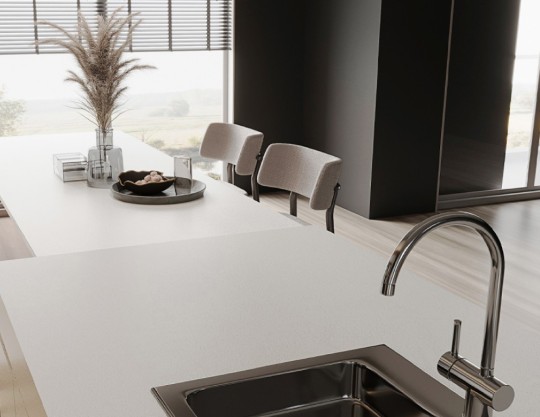How to arrange a dining room?
References
A dining room is more than just a place to eat. It is a space where we gather with loved ones, talk, and celebrate both everyday life and special moments. Family discussions take place at the table, successes are celebrated, and problems are solved. That is why the arrangement of the dining room should combine functionality with atmosphere – it should promote comfort but also encourage people to slow down and spend time together.

Contemporary dining rooms take various forms, tailored to the needs and layout of the home. In larger spaces, classic, separate dining rooms are still common – distinct rooms with a large table and storage space for tableware. More and more often, however, the dining area is integrated into the main living space – connected to the kitchen or living room, it creates an open zone that encourages interaction among household members. A popular solution, especially in smaller apartments, is a dining island or a kitchen peninsula with a table function. Regardless of the layout, one thing is key: a well-designed dining room should reflect the household’s lifestyle and serve their everyday needs.
Choosing a table – the focal point of the dining room
The table is the natural heart of the dining room. It is where daily life happens – not only during meals, but also when working from home, studying, playing board games, or celebrating holidays.
The shape of the table should suit the size and layout of the room. Rectangular tables are ideal for long, traditional interiors and can accommodate more people. Round tables are perfect for smaller spaces – they create a sense of lightness and make conversation easier. Oval tables, combining the benefits of both forms, are also gaining popularity. In compact interiors, it’s worth considering an extendable table – it takes up less space daily but can seat more guests when needed.
The appearance and durability of a table largely depend on the material of the tabletop. Those who prefer natural interiors often choose wood, which brings warmth and timeless aesthetics to the space. However, modern material solutions allow you to go a step further. GRANDEX acrylic solid surfaces enable the creation of custom-shaped tabletops with a seamless, durable, and easy-to-clean surface. For those who appreciate refined finishes, Caesarstone quartz surfaces are an excellent choice – offering rich colors and high resistance to scratches and stains. Meanwhile, Puricelli HPL laminates allow for visual effects of wood, stone, or concrete while maintaining material lightness and durability.
The table should be selected not only according to the number of household members but also the space around it. For comfortable seating, each person should have around 60 cm of table width. Additionally, it’s best to leave at least 75–90 cm of clearance around the table to allow people to stand up, move chairs, and navigate comfortably. In dining rooms connected to kitchens or living rooms, carefully planned ergonomics become even more important.


Chairs – comfort and aesthetics
Dining room chairs should not only be comfortable but also consistent with the style of the interior and the table. When choosing the model, it’s worth considering proportions and materials – upholstered seats add warmth and elegance, while wooden chairs offer a more minimalist and timeless look. Simple, lightweight designs work well in minimal interiors; meanwhile, carved backs or bold colors can enhance more decorative spaces. Intentional mixing of styles – like different chairs at one table – is becoming increasingly popular, adding personality and a touch of nonchalance.

Lighting – atmosphere and functionality
Lighting above the table helps set the mood for the entire dining space. Proportions are key: a light fixture that is too small will disappear over a large table, while an overly large one may overwhelm the space. The number of light sources should match the length of the table, and the light itself should be pleasantly warm and ideally dimmable. Decorative fixtures – made from metal, glass, or fabric – can be either statement pieces or subtle accents. Lighting is essential for ambiance, so it should be thoughtfully designed.

Walls and floors – the foundation of the arrangement
The background of the dining room – walls and floors – should create a cohesive base for the rest of the interior. Neutral colors and natural textures work well, as do bold accents such as a feature wall. It’s important to choose materials that are durable and easy to clean – since spills and stains are common in this area. Surfaces available at Architype, such as HPL laminates, acrylic solid surfaces, large ceramic slabs, and quartz surfaces, are excellent choices for wall and floor applications – resistant to moisture, grease, and dirt, and easy to maintain.

Accessories – atmosphere in the details
Accessories define the final character of the dining room – a rug under the table, artworks, textiles, or plants add softness, color, and life. It’s worth choosing them to enhance the overall design and create a cozy feel – especially if the dining room is part of an open-concept space.

Whether the dining room is a separate room or integrated into the kitchen or living area, it’s worth ensuring consistency in design, day-to-day comfort, and the durability of the materials used.


Feel free to contact us – we’ll be happy to help you select the best solutions for your space, needs, and lifestyle.



